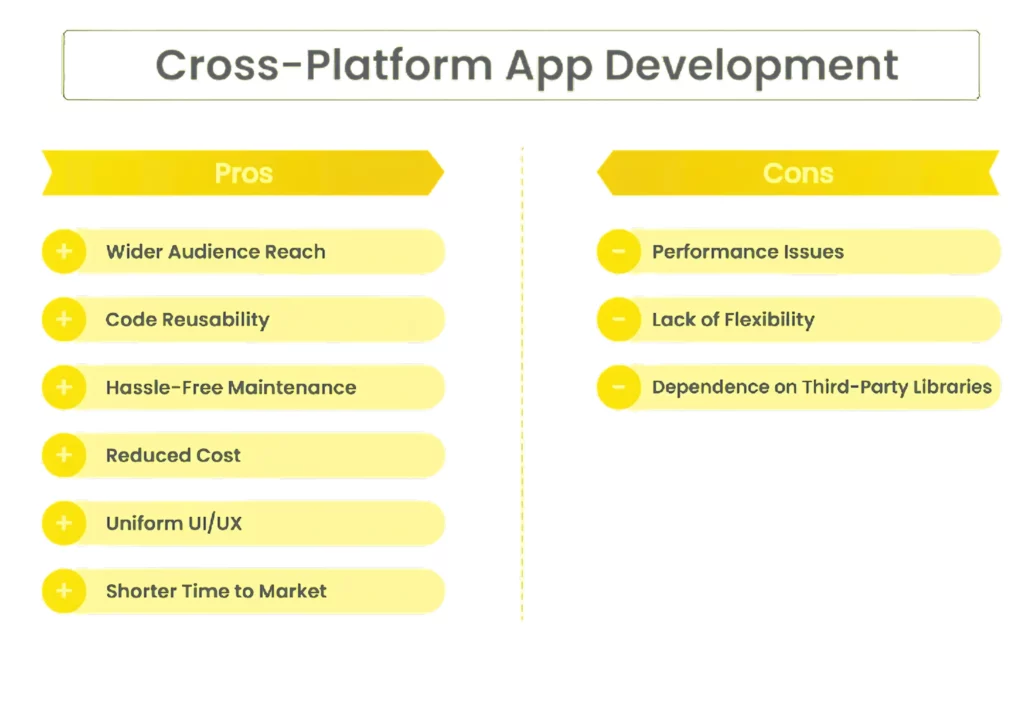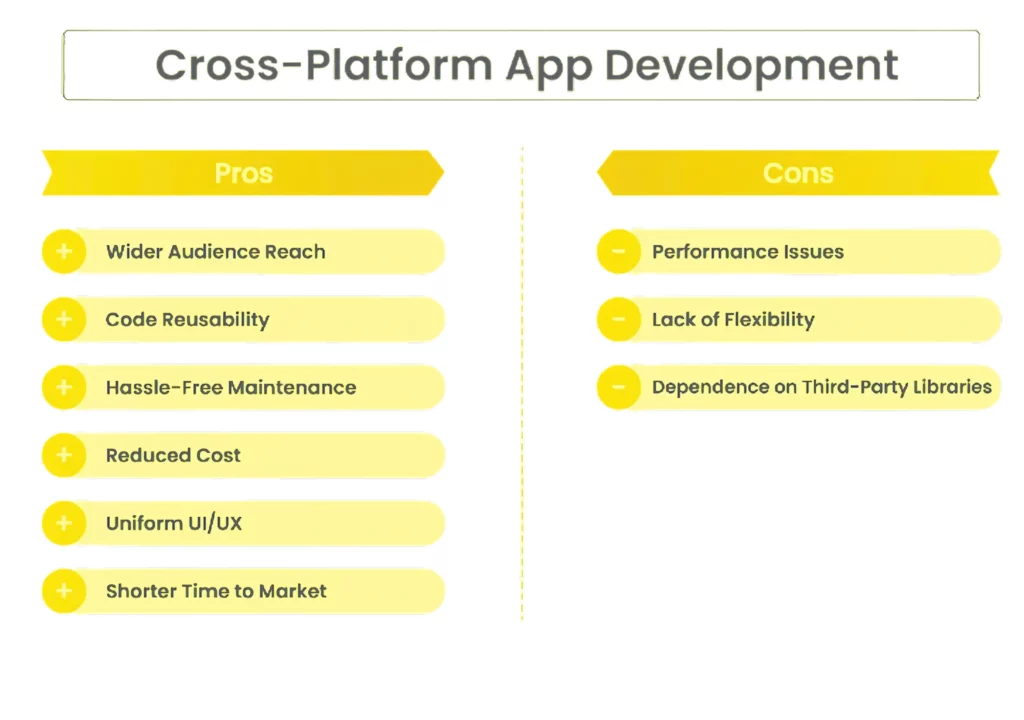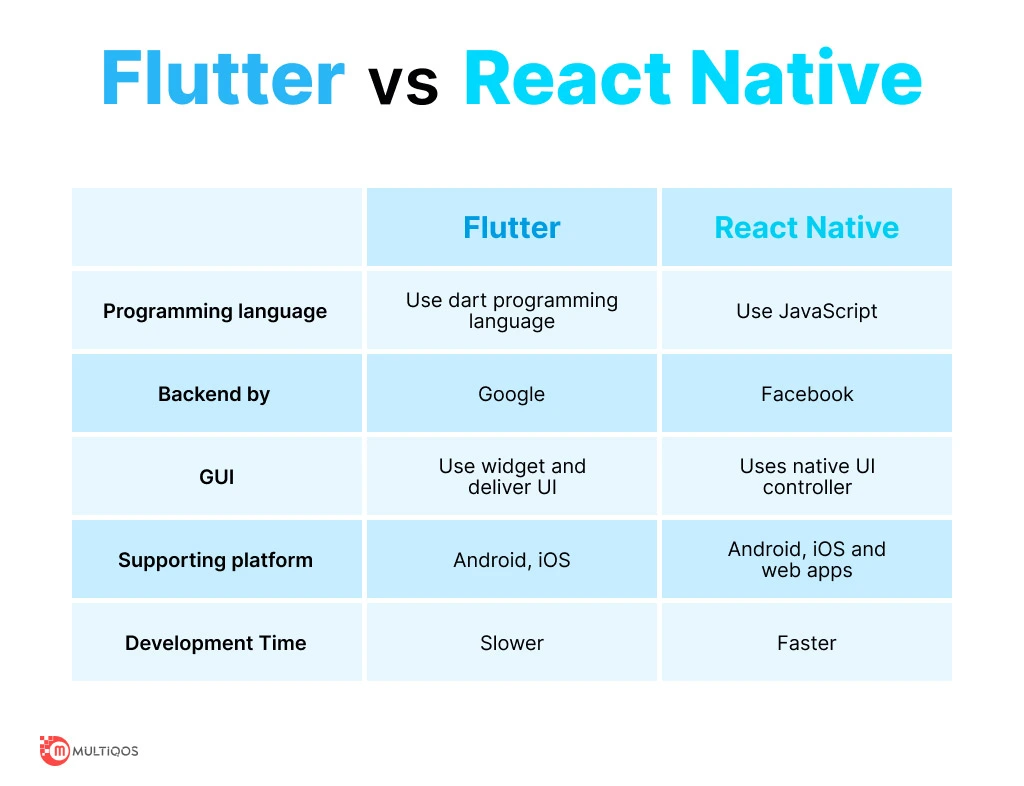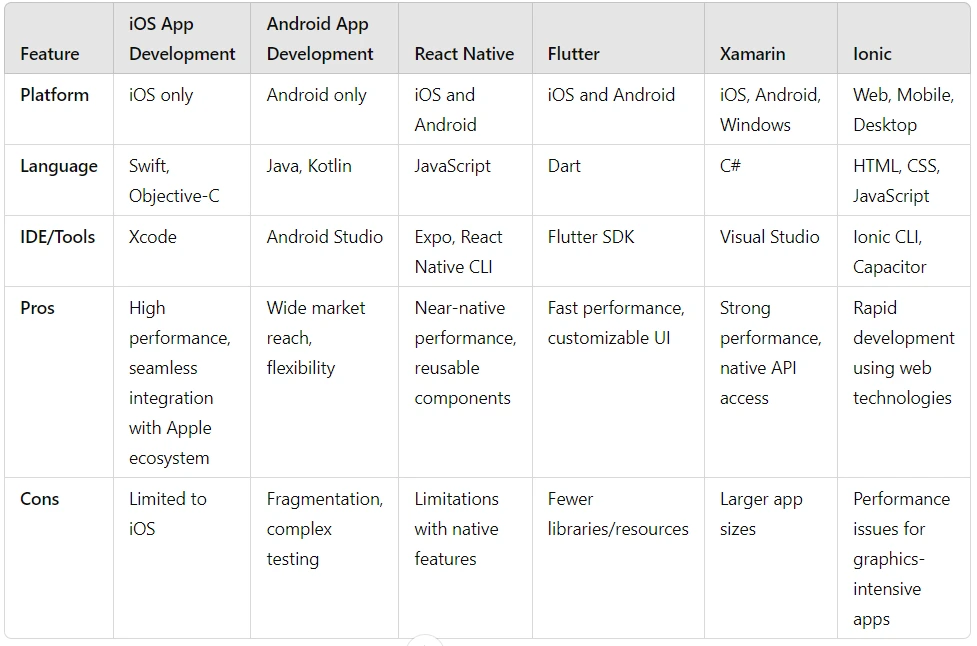- Product development
- 30 Oct 2024
Cross-platform App Development
Choosing the right development platform for your app.



Table of contents
- Cross platform development: Balancing cost savings with performance & compatibility trade-offs
- Why Cross-Platform Development can go wrong: understanding the challenges
- Cross-Platform Development: Benefits and Disadvantages
- Cross-platform vs. hybrid app development
- Solving Cross-Platform Mobile Development dilemma: Practical solutions to avoid common pitfalls
- Conclusion: Practical steps to ensure cross platform development success in 2024
Contributors

Cross platform development: Balancing cost savings with performance & compatibility trade-offs
Understanding multiplatform app development
Cross-platform development sounds intriguing at first. Who wouldn’t want to save money and reach a wider audience by writing code once and deploying it on various platforms? However, things don’t always go as planned. This approach can definitely have its bumps in the road that make it tricky.
Let’s start by discussing performance. Using cross-platform mobile programming means your app often depends on these abstraction layers, which can cause some noticeable lag. Delays can be a real turn-off for your users. That’s not what you want if you’re aiming to keep them engaged. Also, you could end up compromising the user experience. Cross-platform apps often miss out on those cool, platform-specific features that can truly make an app stand out, leaving users with a sense that something’s lacking.
Then there’s the issue of security. Cross-platform apps may not provide the same level of access to security features specific to each platform, which can make your app somewhat more vulnerable to potential threats. Also, debugging these apps can really become a hassle. Finding out what’s gone wrong can be more complicated than it needs to be, especially when you’re facing those tricky underlying layers.
Keeping up with changing native platforms can be tough, and honestly, no one wants to face increasing long-term costs. If you’re working on high-performance or complex applications, you might want to reconsider. Multiplatform app development can be great for simpler projects or MVPs, but if you want to provide an exceptional user experience, native development is usually the best choice.
Why Cross-Platform Development can go wrong: understanding the challenges
Let’s take, for example, a fitness app designed to help users track their personal workout goals. Excited about their concept, the founders decide to go with cross-platform development, hoping to save time and money by using a single codebase for both iOS and Android. At first glance, it seems like the perfect plan.
They opt for a popular cross-platform framework and begin development, eager to get their MVP (Minimum Viable Product) to market quickly. However, as the project progresses, they encounter several unexpected challenges that quickly spiral out of control:
- Performance Issues: As they add more features—like real-time tracking and personalized workout recommendations—the app starts to lag. Users experience delays and glitches, which negatively impact their workout sessions. The performance isn’t on par with native apps, and the founders are left frustrated as their user reviews start to reflect this disappointment.
- Limited Access to Device Features: They soon realize that their cross-platform approach limits access to certain device-specific functionalities, like heart rate monitors and GPS. This hampers the app’s potential, making it less competitive in a market filled with native apps that seamlessly integrate with hardware. They’ve built a tool that can’t fully leverage the technology available to their users.
- User Experience Woes: In their eagerness to meet the deadline, they neglected to pay enough attention to UI and UX design. The app doesn’t quite feel right on either platform, leading to confusion among users. Buttons are misaligned, and some screens look great on one device but poorly on another, causing frustration and high uninstall rates.
- Debugging Nightmares: When bugs arise, debugging becomes a complex nightmare. Because the app is built on a cross-platform framework, the development team spends excessive time tracking down issues that are hard to reproduce across devices. This leads to delays in rolling out fixes, further alienating their user base.
- Long-Term Maintenance Costs: As time goes on, maintaining compatibility with evolving mobile operating systems becomes increasingly burdensome. The team finds that every update requires a significant investment of time and resources, chipping away at the initial cost savings they aimed for with cross-platform development.
Cross-Platform Development: Benefits and Disadvantages
Anytime you think about cross-platform mobile development, you should not only consider the technology benefits but also the business issues that might come up. There are some things you should know about this method before you use it.
You should think about the pros and cons of cross-platform app creation based on your needs and goals if you want to make apps that people will enjoy.

The size of your business is an important factor because it directly affects your needs. You can make great cross-platform apps when you need to quickly test your ideas with minimum useful products (MVPs).
Our Approach
At BEECODED, we take a thoughtful approach to cross-platform development, ensuring that your unique business needs are met with precision and care. We understand the advantages and disadvantages of cross-platform mobile app development tools, so we carefully assess your project’s requirements before recommending the best path forward.
By leveraging multi-platform mobile application development, we can create apps that efficiently reach a broader audience while still focusing on performance and user experience. Whether you need a simple MVP or a complex application, we’ll work with you to find the right balance between cost-effectiveness and the quality that your users expect, helping your business thrive in a competitive landscape.
Is cross-platform better than native?
People often highlight performance as one of the main advantages of native iOS and Android products. iOS and Android are considered some of the best when developed natively on their platforms, offering impressive speed and providing a smooth, lag-free user experience. Hybrid apps that use interpreted code might not perform as well, but recently, new cross-platform frameworks have significantly improved this issue.
Using platform capabilities is another advantage. With native SDKs, you can easily access the camera, Bluetooth, fingerprint scanning, and more, achieving great results. With hybrid software, certain features just aren’t available.
When deciding between native and cross-platform apps, it’s essential to consider both UI and UX as key factors. Creating a flawless UI design is an important trend. Specialists creating cross-platform systems are seriously concerned about this.
Frameworks like Flutter use native system widgets to create a look that fits each platform. Smart design can help hybrid UIs feel in sync with platform-specific products.
Another factor that can impact your dev team is that with cross-platform mobile app development, using one codebase for multiple platforms speeds up development cycles compared to building separate apps for each OS.
The choice relies on the app’s functional and performance needs, development timelines, and the budget an organization can set aside for the project. For simple apps that don’t require complex customizations or real-time performance, using a cross-platform approach can be beneficial.
When should you choose cross-platform app development?
We recommend going for cross-platform app development when you want to market a simple app that doesn’t have too many complicated features or graphics. Some app categories that would cause you no headaches when going for a cross-platform are:
- News and Magazine Apps
- Fitness and Health Apps
- Educational Apps
- Utility Apps
- Media Players
When should you choose native app development?
If you want to make a complex app that needs to run quickly or have lots of advanced features, we suggest going with native app creation. Native development is the best way to go if your app needs complex images, real-time features, or a close connection to the device’s hardware.
Here are some types of apps that work best with native app development:
- High-Performance Gaming Apps
- Augmented Reality (AR) and Virtual Reality (VR) Apps
- Real-Time Communication Apps
- Complex Enterprise Applications
Cross-platform vs. hybrid app development
In mobile app development, many developers often consider the differences between cross-platform and hybrid approaches. Both methods aim to create apps that work across multiple platforms, but each has its own unique advantages and challenges.
Grasping these differences can guide you in choosing the approach that fits your project needs, goals and development team best.

Solving Cross-Platform Mobile Development dilemma: Practical solutions to avoid common pitfalls
When it comes to choosing and implementing your mobile app across various platforms, we usually recommend following these best practices:
- The first step is to carefully evaluate the app’s complexity. If performance and user experience are top priorities, we typically consider a hybrid approach, utilizing native components for critical features while maintaining shared code for the majority of the app.
- Choosing the right development framework, such as Flutter or React Native, is crucial for better performance and benefiting from extensive community support.
- Ensure security by incorporating platform-specific security features where necessary, even in a cross-platform environment.
- Test the app across all platforms to identify potential issues early, and plan for long-term maintenance to ensure ongoing compatibility with native platform updates.
Most popular cross platform mobile app development
1. iOS app development
- Platform: Exclusively for Apple’s iOS devices (iPhone, iPad).
- Language: Primarily Swift and Objective-C.
- Tools: Xcode is the official IDE.
- Pros: High performance, access to advanced features, seamless integration with the Apple ecosystem.
- Cons: Limited to iOS; requires knowledge of Apple’s guidelines and development environment.
2. Android app development
- Platform: Exclusively for Android devices (smartphones, tablets).
- Language: Primarily Java and Kotlin.
- Tools: Android Studio is the official IDE.
- Pros: Wide market reach, access to device features, and flexibility in app design.
- Cons: Fragmentation due to various device manufacturers; testing can be more complex.
3. React native cross-platform development
- Platform: Develops apps for both iOS and Android using a single codebase.
- Language: JavaScript, leveraging React.
- Tools: Uses Expo and React Native CLI for development.
- Pros: Near-native performance, strong community support, and reusable components.
- Cons: Some limitations in accessing certain native features; performance may not match fully native apps for complex tasks.
4. Flutter
- Platform: Also builds apps for both iOS and Android with a single codebase.
- Language: Dart.
- Tools: Flutter SDK and various IDEs (Android Studio, VS Code).
- Pros: Fast performance, customizable UI with native-like feel, and hot reload feature for rapid development.
- Cons: Relatively new, which may mean fewer libraries and resources compared to more established frameworks.
Flutter vs. React Native
 Source: Multiqos
Source: Multiqos
5. Xamarin
- Platform: Develops apps for iOS, Android, and Windows using a single codebase.
- Language: C#.
- Tools: Visual Studio is the primary IDE.
- Pros: Strong performance and native API access, code sharing across platforms, and integration with Microsoft services.
- Cons: Larger app sizes, and may require more setup compared to other cross-platform solutions.
6. Ionic
- Platform: Primarily for web, mobile, and desktop using a single codebase.
- Language: HTML, CSS, and JavaScript (Angular, React, or Vue).
- Tools: Ionic CLI and Capacitor for native functionality.
- Pros: Rapid development using web technologies, strong community, and good documentation.
- Cons: Performance may not match native or other cross-platform frameworks, especially for graphics-intensive apps.
7. Comparison between all the above

Conclusion: Practical steps to ensure cross platform development success in 2024
Remember that mastering cross-platform development doesn’t have to be a hassle. While balancing costs without compromising performance and security can be the main challenge, success ultimately depends on committing to a thorough process and choosing the right software development partner to begin with.
Choose a team that partners with you in evaluating the best cross-platform mobile app development framework for your needs, guides you through your multiplatform app development strategy, and gets the execution on point.
HR Workflow Automation: Cut Onboarding Time by 60% While Ensuring Compliance
How to Reduce Financial Close Time by 3 Days with ERP Workflow Automation
Outsourcing vs. In-house Development: Why Romania is the Best Middle Ground